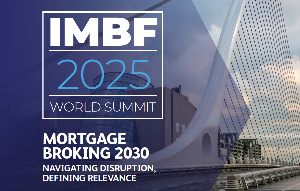
Mortgage adviser Kris Pedersen of Kris Pedersen Mortgages says investors are ignoring new builds and targeting multi-income existing properties.
This is backed up by Trade Me’s latest data showing in the July year, searches with keywords “income” rose 6.3%, “home and income” searches rose 10.6%, searches with “rental” in them were up 12.3% and those for “yield” were up 8.9%. Low numbers of searches for “investment property” were up 41%.
It comes at a time when property values across the country dropped to $805,984 last month. This is the eighth month in a row values have dropped to be about 18% below the post-Covid cyclical peak, but still 16% higher than the pre-Covid level of March 2020.
However, CoreLogic's hedonic Home Value Index’s (HVI) 0.5% pace of decline last month has roughly halved in the past couple of months after an average fall of about 0.9% from May to August.
CoreLogic chief property economist, Kelvin Davidson says this could be a sign of an approaching floor for property values.
““The latest fall in national home values suggests that even though mortgage rates have already dropped quite sharply, the influence of job losses and the wider feelings of reduced job security are playing the more important role at present.
Competition heats up
When the housing market boomed after the Covid-19 lockdowns, investors and first home buyers vied intensely for properties. That died down after investors sat on the sidelines for three years, waiting for interest rates to drop, and a change of Government to a National coalition, which promised to reintroduce tax deductibility and drag the Brightline test back to its original two years.
Even though first home buyers have had the ascendency in the property market over the past two years, Pedersen says there will always be a level of competition for existing properties – even from property traders targeting rundown properties to buy at a good discount to create equity and then sell into the first home buyer market.
New Zealand Mortgages managing director and head of lending Nathan Miglani says his business has seen a big uptick in the number of investors. “The number of property investor loans we have done over the past two months is the same as we did for the whole of last year.”
The majority are looking at existing properties now the Brightline test has been brought back to two years, he says. “Buying an existing house with land with the potential to renovate or subdivide in the future is looking extremely attractive to investors.”
He says first home buyers will be back to competing full on with investors next year.
Pedersen says the investors he works with are looking at yield, which they can get from blocks of flats and similar types of properties in the provinces rather than the big cities, where housing markets are depressed.
“Investors can pick up an existing multi-income property which has an attractive cash flow and add value to it by a full renovation or adding extra bedrooms or living areas.”
Until recently, many investors steered away from existing properties after the previous Labour Government lifted the Brightline test to 10 years and stopped them from claiming tax deductibility on their mortgage repayments when offset against rental income.
New housing was left under the old rules making it more attractive to investors for rentals. A slew of new units, flats and terraced housing was built by developers, much of it now hitting the market and proving difficult to sell, just as interest rates are dropping, the Brightline test has been brought back to two years and tax deductibility will be fully reinstated in the next tax year.
As a result, existing housing has come back into investors’ favour.
Confidence coming back
Also helping is the change in the on-the-ground mood around New Zealand’s wider property market in the past few weeks, Davidson says.
That shift has been seen across a range of segments, from property valuers to individual investors, to developers and construction industry consultants, he says.
“Rising sentiment may take some time to hit the ‘hard data’, but there’s a sense that the end could be in sight for the recent downturn.
“For property investors in particular the falls in mortgage rates are key, flowing directly through to better cashflow on a typical rental purchase - or in other words reduced losses – and smaller top-ups from other income. Increased interest deductibility supports that effect too.”
Pedersen says since the OCR cuts there has been a flurry of investors wanting pre-approval to buy.
“The OCR cuts have kicked off a large amount of activity in the market. There's probably quite a few investors now who are looking knowing there will be further OCR cuts and a lower interest rate environment than what has been seen in the past 12-18 months.
‘If they can make the numbers stack up or get close to stacking up they will have the confidence to buy. Only a few months ago they didn’t have that confidence because RBNZ governor Adrian Orr and other economists were talking about pushing the OCR up further.
“So, that ability for investors to now look at a deal and go, ‘okay, if I make the numbers work, I'm good’, will bring some much needed confidence back to the sector.”
Pedersen says as the market recovers, the next cycle will be much different to the one of the past four to five years. “People will go back to what I can active investing.
Investors will buy properties where they can increase the yield through renovations and similar things. We haven’t seen much of that in the past few years. That was because interest rates were driven so low, mum and dad investors, especially, could buy a property and the cash flow was okay, even without making many substantial improvements.”
He says the average investor is now a lot more educated. They have their finger on the pulse more. A lot more of active investing is coming through.
What will stymy the market for a while is the huge overhang of listings. More than 40% more listings, in general, are on the market than this time last year and in some places even more.
“We have more demand and more supply, so it is a good chance for investors, who probably have a six to 12 month window to potentially pick up a bargain, while being aware that prices are not likely to drop too much more.”




Comments
No comments yet.
Sign In to add your comment